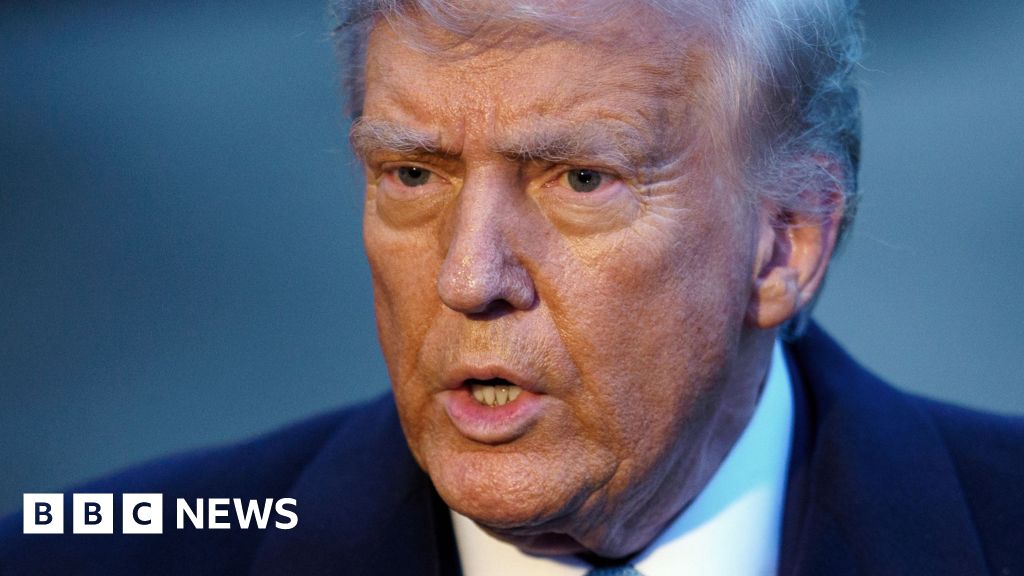- cross-posted to:
- [email protected]
- cross-posted to:
- [email protected]
Summary
Trump announced that 25% tariffs on imports from Canada and Mexico will take effect on February 1, though a decision on including oil remains pending.
He justified the move by citing undocumented migration, fentanyl trafficking, and trade deficits.
Trump also hinted at new tariffs on China.
Canada and Mexico plan retaliatory measures while seeking to address U.S. concerns.
If oil imports are taxed, it could raise costs for businesses and consumers, potentially contradicting Trump’s pledge to reduce living expenses.



So do either of those strategies apply to the manufacturing of physical goods as are being tarifed?
Do you think that Ford is going to sell cars at a loss to make money on service contracts now that their costs are rising because some parts are fabricated in Detroit, assembled in Windsor, and then shipped back for installation in Flint? If it didn’t make sense to sell at a loss before, why would it make sense to do so now?
Do you think that there’s money to be made on getting people hooked on buying wheat perks?
We’re not talking videogame DLC, we’re talking about food, manufacturing materials, electrical power, and physical goods. The price of these things are going up, just like they went up with previous tariffs. This is a super easy case, because he did it to a lesser extent before, and it didn’t do what he’s saying it will. There’s no reason to believe that making the bad choice more vigorously will make it suddenly have a different outcome.
Google “byd china car sell at a loss” and “chicken tax”.
You will see price wars or the race to the bottom in the auto industry and you will see how tariffs on imported cars are one way we have protected domestic manufacturing.
Dude, go reread my first comment. I specifically mention tarrif as a counter to restore market balance after manipulation. These aren’t being used to counteract an anticompetitive subsidy. Raising prices to restore equilibrium and raising prices to disrupt it are very different things.
I know you want this to be something that works, but there’s a reason why reputable economists think this is just the worst idea.
I’m having a hard time connecting what you’re saying and my point. I also don’t really care what economists are saying, I don’t automatically assume economists are correct because they are economists. I understand tariffs are not good, which is why I said “ultimately”, and nothing that you have said yet has changed that opinion, but I am open. I didn’t even disagree with many of your statements I just didn’t see how they connect.
Can you see how maybe it would be easy for a person to think that you thought tariffs would be good for the US? If that wasn’t your point, then I have no idea what you’re talking about.
Why don’t you care what economists say? They’re people who have actually spent time looking at and thinking about these things. They have numbers to back up their claims and, while fallible, they’re likely the most qualified people to make assessments about the economic impact of policy changes.
It’s like saying you don’t care what engineers say when what you’re doing is building a bridge. At the very least it should raise a red flag when nearly all of them say something is a bad idea.
You’re saying “there’s a reason reputable economists say”, as if there aren’t reputable economists also saying something else, like “tariffs are a tool and predicting impact is difficult if not impossible due to complexity”. So, whats the point in mentioning that “reputable economists say” unless you’re pandering to an appeal to authority. Economists are just people and can make mistakes, entire groups of people like “reputable economists” can have the wrong ideas at the same time, or collectively jump to conclusions. I don’t care what economists say, I care about why they say it and if it makes sense. Your point is “there’s a reason why” and you load this with “reputable”. How do you qualify reputable and what is the reason they say? Could they be wrong and if not, why is there an economy at all?
Engineers make mistakes all the time too. The idea that an engineer can’t be wrong about engineering and a layman can’t comprehend even intuitively understand engineering concepts is exactly what an appeal to authority is about.
I literally linked you to a large collection of their statements on the matter, backed by data. “Appeal to authority” isn’t a magic phrase that lets you dismiss expertise entirely. “Appeal to authority” is a fallacy, but “deferring to expertise” is not. I’m not saying these tariffs are wrong because economists say they are, but that it’s reasonable to accept consensus opinion of regarded experts without walking through every step of their argument.
https://www.cambridge.org/core/books/abs/informal-logic/appeals-to-authority/F455E1D4279677917F379D9464A76060
I specifically mentioned that they can be wrong, and that it’s maybe worth reconsidering when you’re disagreeing with the experts. Of course engineers can make mistakes. But if a group of them say “that bridge is unsafe, we can show you our calculations”, and a non-engineer says that they have an “intuitive feeling” that it is, I know who I’m listening to.
Are you going to keep shifting to different topics? As far as economic arguments go “there’s a theoretical economist who thinks this is a good idea that I haven’t cited and that agrees with my intuition” is… Not very interesting.